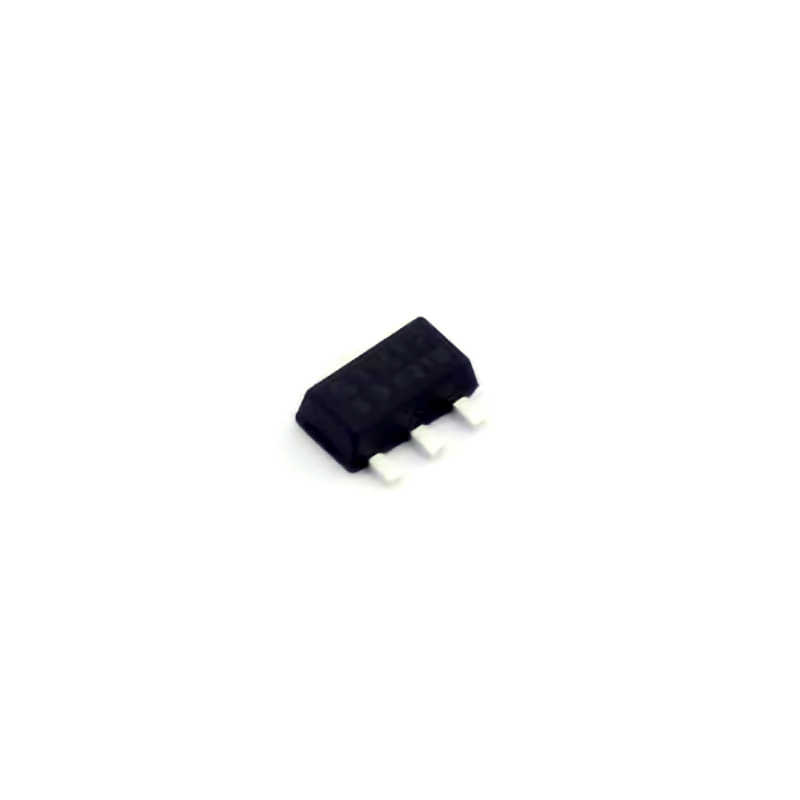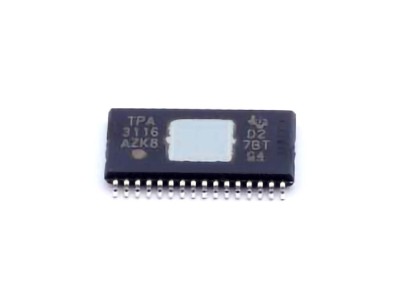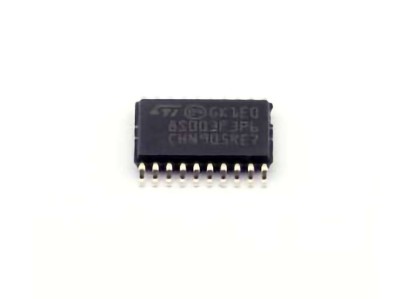
Understanding the AMS1117-3.3 and Its Common Issues
The AMS1117-3.3 is a low-dropout (LDO) voltage regulator that converts higher input voltages to a stable 3.3V output, making it a go-to choice for Power ing a wide variety of devices such as microcontrollers, sensors, and communication module s. It is commonly used in both DIY electronics projects and professional designs due to its simplicity and availability. However, like any electronic component, the AMS1117-3.3 is not immune to problems.
1. Powering Issues: Voltage Drops or Insufficient Output
One of the most common issues when using the AMS1117-3.3 is experiencing voltage drops or insufficient output voltage. Users may expect a stable 3.3V, but the regulator can sometimes provide less than expected.
Causes:
Input Voltage Too Low: The AMS1117-3.3 requires a minimum input voltage of 5V to provide a stable 3.3V output, due to its LDO design. If the input voltage is lower than this, the regulator will struggle to maintain the correct output, leading to voltage drops or instability.
Excessive Load Current: The AMS1117-3.3 has limitations on how much current it can supply. It typically provides up to 800mA under optimal conditions, but if the load exceeds this, the regulator may not be able to maintain the output voltage, resulting in a drop.
Solutions:
Ensure Proper Input Voltage: Check that the input voltage to the AMS1117-3.3 is within the required range, ideally 5V or slightly higher. If the input voltage is close to 5V, you might need a different regulator or a higher input voltage to compensate for the dropout voltage.
Monitor the Load Current: Always verify that the current drawn by the connected components does not exceed the AMS1117-3.3's rating. If you are powering power-hungry devices, consider using a regulator with a higher current rating, or distribute the load across multiple regulators.
2. Overheating: Thermal Shutdown
The AMS1117-3.3 can get quite hot under heavy load conditions. If the regulator overheats, it may shut down or start to exhibit erratic behavior, causing instability in the output voltage.
Causes:
High Input-Output Voltage Differential: The AMS1117-3.3 has a typical dropout voltage of about 1.1V, meaning it will generate significant heat if the input voltage is much higher than 3.3V. For example, if your input voltage is 12V, the regulator needs to drop 8.7V, resulting in significant heat dissipation.
High Current Draw: As the current drawn by the load increases, the amount of heat generated also increases, which can push the AMS1117-3.3 beyond its thermal limits.
Solutions:
Use Heatsinks or Improve Ventilation: If the AMS1117-3.3 is dissipating too much heat, attaching a small heatsink to the regulator can help improve its cooling. Additionally, ensure the regulator is placed in a well-ventilated area to allow heat to dissipate efficiently.
Lower the Input Voltage: To reduce the amount of heat generated, try to keep the input voltage as close to 5V as possible. Using a 5V input instead of a higher voltage will reduce the temperature rise and improve efficiency.
Use a Different Regulator: If heat is a major concern, consider switching to a switching regulator instead of an LDO. Switching regulators are much more efficient and generate less heat, especially when the input-output voltage difference is large.
3. Stability Issues: Noise and Ripple in the Output
Another common problem with the AMS1117-3.3 is poor output stability, particularly with noise or voltage ripple. This can be problematic in sensitive applications like audio systems or precision sensors.
Causes:
Insufficient capacitor Filtering: The AMS1117-3.3 relies on input and output Capacitors to stabilize its operation. If these capacitors are too small or of poor quality, the regulator can exhibit noise or ripple on the output voltage.
Unstable Input Power: If the input power is noisy, the AMS1117-3.3 may also produce unstable output. This is especially true if the input voltage source is a noisy DC source or poorly filtered.
Solutions:
Use Proper Capacitors: To ensure stable output, place a 10µF ceramic or tantalum capacitor on the input and a 10µF to 22µF capacitor on the output. High-quality low ESR capacitors are preferred to minimize ripple and improve stability.
Improve Input Power Filtering: If you're using a noisy power source, consider adding additional filtering components such as inductors or larger electrolytic capacitors to smooth the input power before it reaches the AMS1117-3.3.
4. Incorrect Pin Connections or Wiring
Incorrect wiring of the AMS1117-3.3 can also cause functional problems or complete failure of the regulator. It's crucial to follow the correct pinout to avoid issues.
Causes:
Miswiring the Pins: The AMS1117-3.3 has three pins: input (Vin), ground (GND), and output (Vout). Incorrectly wiring any of these pins can prevent the regulator from functioning properly.
Short Circuits or Grounding Issues: If there are any shorts or grounding issues in the circuit, it could cause the AMS1117-3.3 to malfunction or even become damaged.
Solutions:
Double-Check Pinout: Always verify the pinout of the AMS1117-3.3 before soldering or connecting the regulator. The input should be connected to a power source above 5V, the ground to the common ground of the circuit, and the output to the load that requires 3.3V.
Use Proper Wire Gauge: When connecting the AMS1117-3.3 to your circuit, make sure to use an appropriate wire gauge to avoid excessive Resistance , which could lead to voltage drops or overheating.
Advanced Troubleshooting and Solutions for the AMS1117-3.3
While the AMS1117-3.3 is generally a reliable component, advanced issues might still arise. In this section, we’ll look at more complex problems and deeper troubleshooting techniques.
5. Output Voltage Drift or Inaccuracy
In some cases, users may notice that the AMS1117-3.3 output voltage drifts or is not exactly 3.3V. This can be critical for applications requiring precise voltage regulation.
Causes:
Temperature Variations: The AMS1117-3.3 has a temperature coefficient that may cause the output voltage to change slightly with variations in ambient temperature. In some cases, this drift may be noticeable.
Aging of Components: Over time, the characteristics of the internal components in the AMS1117-3.3 can change, leading to slight inaccuracies in the output voltage.
Solutions:
Use a Higher Precision Regulator: If voltage accuracy is critical, consider using a higher-precision low-dropout regulator with a tighter tolerance, such as the LM1117 or other more precise variants.
Thermal Management : To minimize the effect of temperature on the output voltage, improve thermal management (e.g., heatsinks or better airflow) to keep the AMS1117-3.3 at a stable operating temperature.
6. Capacitor Selection and ESR (Equivalent Series Resistance)
Another advanced issue revolves around the selection of capacitors. Incorrect or low-quality capacitors can cause instability and reduce the performance of the AMS1117-3.3.
Causes:
Low-ESR Capacitors: The AMS1117-3.3 is sensitive to the ESR of the capacitors used in the circuit. If the ESR is too high, the regulator may become unstable, leading to poor regulation and increased ripple.
Solutions:
Use Low-ESR Capacitors: Always choose low-ESR capacitors for both the input and output stages. Ceramic capacitors are generally ideal for LDO regulators like the AMS1117-3.3. The recommended range for the input capacitor is 10µF, and for the output, 10µF to 22µF is typical.
Use Appropriate Capacitor Types: If you're facing stability issues, consider switching to higher-quality capacitors that offer lower ESR and better performance, especially in noisy environments.
7. Using Multiple AMS1117-3.3 Regulators in Parallel
Sometimes, users may try to use multiple AMS1117-3.3 regulators in parallel to share the load. While this might seem like a solution to current limitations, it can introduce a host of problems if not done correctly.
Causes:
Uneven Current Sharing: If the AMS1117-3.3 regulators are not properly matched, one regulator may end up supplying more current than the others, leading to overheating and reduced lifespan.
Solutions:
Use Proper Current Sharing Techniques: If you must use multiple regulators, ensure that they are equally matched, and consider adding resistors to balance the load between the regulators.
Conclusion
The AMS1117-3.3 is a versatile and reliable LDO regulator, but like any electronic component, it is not immune to problems. By understanding the common issues—such as power instability, overheating, noise, and pin connection errors—and implementing the solutions provided, you can significantly improve the performance and reliability of your circuit. With the right troubleshooting approach, the AMS1117-3.3 can continue to serve as an excellent power solution for your projects.
Partnering with an electronic components supplier sets your team up for success, ensuring the design, production, and procurement processes are quality and error-free.


